How to fix a chainsaw? Power tools are excellent, but they have inherent flaws that need to be fixed. Minor to major, chainsaw issues can be dangerous if left unattended.
If you’ve ever used a chainsaw before, you’ll be able to handle most of the common chainsaw issues on your own without the help of a professional.
There are instances when getting professional aid is necessary, especially if you don’t know much about chainsaws. Proper care and maintenance, as well as purchasing a high-quality chainsaw, will help prevent many of the common chainsaw issues faced by users.
Several common chainsaw difficulties can be avoided with good care and maintenance, which we’ll cover in this post. We’ll also go over how to fix a chainsaw and deal with any common problems that may occur.
TABLE OF CONTENTS:
- Why a chainsaw won’t start and how to fix it
- Is your chainsaw spark plug defective?
- Is your chainsaw carburetor clogged?
- Does your chainsaw have a faulty ignition coil?
- Broken rewind spring on your chainsaw?
- The chainsaw’s engine could be flooded with fuel
- The choke activation on your chainsaw may be problematic
- Chainsaw fuel deterioration may be a factor
- Proactive maintenance
- Before getting started, OSHA recommends the following precautions:
- Chainsaw repair and upkeep best practices
- How to sharpen a chainsaw
- Chainsaw Performance Test
- Taking care of the chain and chain brake
- Conclusion
Why a chainsaw won’t start and how to fix it
Everyone has chainsaw difficulties at some point, and most of them can be fixed with a few simple fixes. Maintaining the optimal condition of your chain saw bar, chain, and drive sprocket requires more effort than simply sharpening and tensioning the chain.
The driving sprocket and bar on a chain saw ultimately wear down and need to be changed, even with great care. Taking care of your saw might prevent a lot of headaches in the long run.
Every time you fill up, remember to add bar and chain oil to the saw and clean the air filter. Also, run a file over the chain every tankful or two.
The quality of the chain’s sharpening is usually to blame for any issues with its performance. It’s possible that you’re filing the cutters at various angles or exerting inconsistent pressure on one side over the other if the chain cuts crooked or at an angle.
Top plate angle and cutter size should be identical throughout your chain.
Several factors could be at play if your chain wears down soon. Use the correct sized file for your chain according to the instructions in your user’s handbook.
It’s also possible that you’re filing with too much haste. Cutting edges that are overly thin and dull are likely to form as a result of this.
Spark plugs can fail for a variety of reasons, so check to see if any other ignition system components are malfunctioning as well. You should check your carburetor if your chainsaw is not accelerating properly even after you’ve tested the ignition and it is working.
If the spark plug is brown/grey, the air and fuel are properly mixing, and this can be determined by looking at the state of the spark plug.
Is your chainsaw spark plug defective?
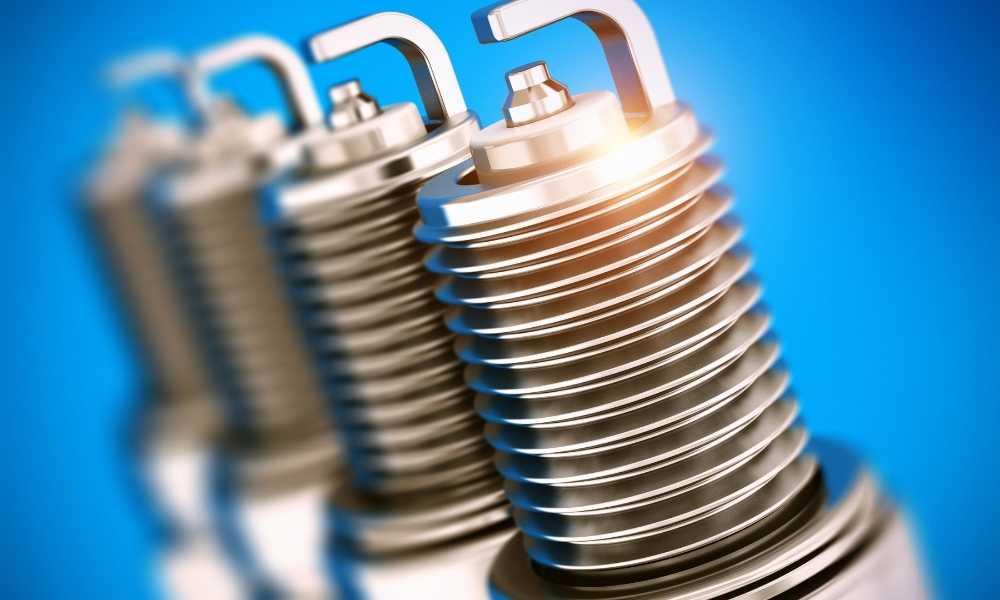
If your chainsaw’s spark plug is faulty, it won’t be able to generate enough electricity to start the engine. Clean, crack, degrade, or destroy the spark plug by removing it.
Carbon buildup or an electrode that has been burned up may also be present. Replace the spark plug if it has one or more of these problems.
Though aesthetically the spark plug appears to be in good shape, it’s still worth replacing if you haven’t done so in the previous few seasons.
Is your chainsaw carburetor clogged?
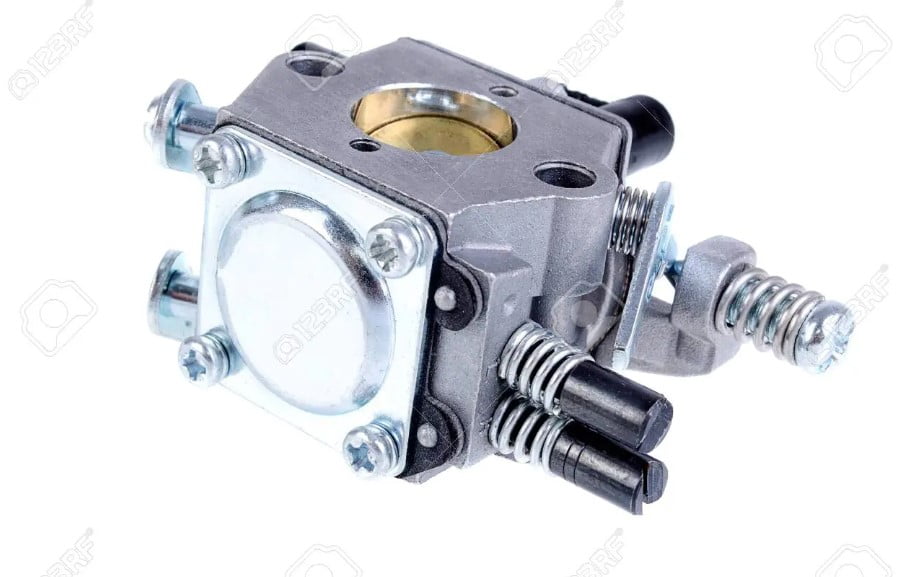
A chainsaw’s carburetor ignites the engine by mixing air and fuel. The carburetor can become clogged if fuel is left in the engine for an extended period of time, making it impossible to start.
Clean the carburetor if the obstruction is modest. Drain the fuel from the carburetor, spray it with a cleaning solution, then wipe it clean to unclog it.
Carburetors may need to be replaced if they are too blocked up to be fully cleaned (or if repeated cleanings fail to remove all the buildup).
Alternatively, it could be inoperable due to wear and tear. Remove the air filter, add a teaspoon of fuel, and start the engine to check the carburetor.
The carburetor may be the problem if the chainsaw starts for a short time and then dies. To swap out the carburetor, get one that’s compatible with the chainsaw and follow the manufacturer’s instructions.
A saw that won’t start or runs rough can lead you to believe that the carburetor is out of synch, but it may just be a neglected air filter that is to blame.
The carburetor’s air-to-gasoline ratio will be skewed if the filter is clogged. This can lead to a clogged spark arrester screen inside the muffler and a fouled spark plug. Many people advised me not to touch the carburetor unless I was very certain I knew what I was doing.
Does your chainsaw have a faulty ignition coil?
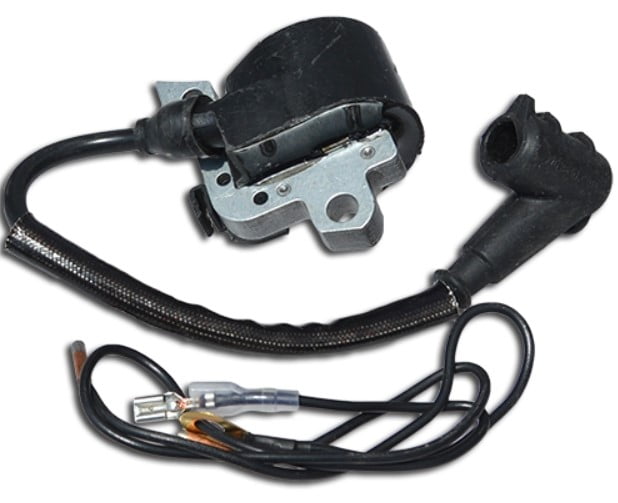
The spark plug receives voltage from the ignition coil, which ignites the fuel and activates the chainsaw. It’s possible that the coil has worn out from repeated use, which would explain why the engine won’t start.
Make sure the spark plug isn’t the problem before investing in an ignition coil tester and following the manufacturer’s directions.
This indicates that the ignition coil is damaged and must be replaced during the testing phase if a spark does not develop.
A recoil starter allows the user to pull up on the starter rope and activate the chainsaw’s internal starting mechanisms to start the engine.
The engine will not start if the recoil starter is defective or built incorrectly. To see if the chainsaw’s recoil starting assembly is malfunctioning, remove it from the machine to observe what’s going on.
It is possible that the pulley system has become stuck and has to be re-adjusted. If this doesn’t work, you may need to replace the chainsaw’s recoil starter.
Broken rewind spring on your chainsaw?
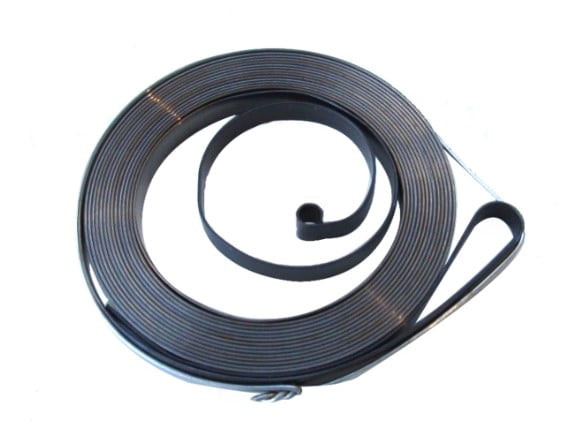
When you pull the beginning cord, the rewind spring automatically rewinds it. Rewind springs can fail to rewind and the engine won’t start if they’re damaged after the first draw, thus they must be replaced.
There are some chainsaw models that allow you to replace the rewind spring on your own. Others may necessitate a complete recoil starter replacement by the user.
The chainsaw’s engine could be flooded with fuel
Many chainsaws fail to start because of a problem with the gasoline. If the chainsaw’s recoil starter system has been regularly used, the operator may have accidently flooded the engine.
The presence of a gasoline odor is a common sign that the engine has become flooded. If you feel fuel has flooded the chainsaw’s engine, pull the starter cord multiple times while holding the throttle, remove and replace the spark plug, and then attempt to start the chainsaw once more.
Related Article: How to store a chainsaw correctly
The choke activation on your chainsaw may be problematic
It is common for chainsaws to feature a choke position that can be utilized in cold conditions to get the saw running. The richness of the air and fuel mixture in the carburetor improves fuel flow with this setting.
A chainsaw that has been running for a while and is already heated might quickly overheat the engine if the choke is turned on during mild or warm weather, or after the chainsaw has already been used.
It’s important to make sure the choke isn’t activated when troubleshooting the chainsaw in a warm or mild environment. The engine may be flooded if it’s been running, in which case follow the preceding instructions to fix it.
Chainsaw fuel deterioration may be a factor
When using a chainsaw, the type and quality of fuel you use might have an impact on how well it performs. To begin, make sure the chainsaw’s gasoline tank is full before using it.
If the chainsaw hasn’t been used in a while, make sure there isn’t any old gasoline accumulating inside the machine.
Clean the gas tank and refill it with new gas if this is the case. The only way to know for sure if your chainsaw will start is to take it to a professional mechanic or buy a new one.
A professional tree-trimming service can take care of your immediate needs while you get a diagnostic or look into the best chainsaw options.
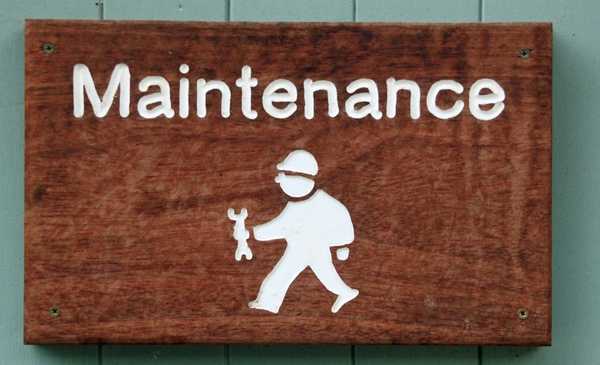
Proactive maintenance
Every tree care professional’s first step should be to study the manufacturer’s instructions before performing any chainsaw repairs or maintenance.
For each brand, there will be a different set of controls, internal design, and service schedules for components that need to be frequently serviced.
Fuel or electricity can be used to keep the chain moving at a desired speed. In order to improve cutting performance and decrease kickback, the chain is equipped with teeth. If there is a kickback, the chain brake will stop it from turning, lowering the danger of damage.
Related Article: Top chainsaw tips and tricks!
It is the lubricating system that helps to ensure that the chain does not stutter or sluggishly move around the guide bar. Ensures that the engine does not overheat during times of prolonged use or heavy workloads.
A complete evaluation of these fundamental components should be conducted by tree care professionals before any work is done, according to OSHA.
Maintaining a proactive attitude to chainsaw inspections will assist uncover potential flaws and will not only help extend the saw’s lifespan, but also help avoid accidents before they occur.
Before getting started, OSHA recommends the following precautions:
- Look for any potential safety hazards with all of the controls, bolts, and handles. Check to see if the chain tension is set correctly by the manufacturer. Fuel and lubrication systems should be filled to the correct levels.
- The chainsaw’s teeth should be sharpened before use. Put on safety goggles, work gloves, hard hats, and other PPE as necessary.
- No matter how high or low they work, arborists should always have a colleague on hand to keep an eye on their progress. When you’re pruning trees, having an extra pair of eyes helps keep you and your co-workers safer from major chainsaw injuries or mishaps.
- Chainsaws should never be operated above the shoulders, and changes to the chain should never be made while the machine is operating.
Chainsaw repair and upkeep best practices
Before or while using your chainsaw, you may need to perform some on-the-spot maintenance. While it may be annoying, some mechanical difficulties can be fixed quite quickly, but others may necessitate the purchase of replacement parts and a safe working environment.
A dull chain is one of the most typical problems arborists face. Using a saw with a dull chain can increase the chance of kickbacks and impair the saw’s overall performance, making it extremely hazardous.
Other typical problems to check for during routine maintenance include gas leaks, broken spark plugs, warped guide bars, and clogged air filters.
If a chainsaw is stuttering or having trouble starting, an arborist should first try to determine the root reason.
How to sharpen a chainsaw
It’s not as tough as you would think to keep your chainsaw sharp and in working order. As Popular Mechanics points out, there are a variety of ways to sharpen a chainsaw tree, including: filing by hand, using a power sharpener, and so on.
For arborists on the go, bench-top sharpeners may be the most convenient choice, but they are unlikely to be commonly available. In these situations, having a round file with the appropriate diameter on available is an easy way to keep the chainsaw’s cutting edges sharp on the job site.
Related Article: The best way to sharpen a chainsaw blade
When sharpening a chainsaw, follow these steps:
Step 1: The file should be held against the cutting edge while using a sharpening guide on top of the saw chain.
Step 2: The file’s cutting tooth angle should match the file’s adjustment settings. Remember that these cutting edges have alternating angles.
Step 3: Push the file forward along the cutting teeth with a moderate and steady stroke. Keeping the tooth’s inclination in mind, perform this action five more times.
Step 4: Ensure that the curved edges of the cutting teeth are clean and shining before moving onto the next tooth and repeating steps 1–3.
Like any other skill, sharpening and repairing a chainsaw takes time and effort to perfect. It’s important to keep an eye out for any problems with your chainsaw by performing regular inspections and maintenance.
Keeping a well-maintained chainsaw will help you avoid major injuries or even death due to a mishap. For chainsaw repair safety, always study the manufacturer’s rules and recommendations.
Chainsaw Performance Test
Ignition Test
• Use the spark plug wrench to remove the spark plug after removing the rubber adaptor. Make sure that the rubber plug and wire are in good condition.
• Use the gas and toothbrush to clean the spark plug. Remove any and all buildup from the tip and gap using a stiff brush. Use the rag to clean the area.
• The rubber plug can be used to insert the spark plug. Allow the wire and spark plug to dangle loosely from the engine’s metal frame.
• Slowly yank the starter cord to see whether a spark appears across the metal contact points. Replace the spark plug and do the test again if it doesn’t work.
• It is necessary to disconnect the spark plug wire from the starter coil. If they’re damaged, get new ones.
Air Test
• Clean out your HVAC system by removing the air filter cover and the actual filter element itself. Use a toothbrush, rag, and gas to clean the air filter. Remove as much dirt and debris as you can from the air filter’s screen. Replace if it’s too filthy or old to be cleaned.
• Remove the muffler cover using the Allen wrench. Remove the spark-blocking screen from the muffler’s exhaust pipe. Replace the screen if necessary.
• To see if your saw has compression, pull on the starter cord. The engine will create a whining and chugging noise if the saw has compression. Remove the starter cover with a screwdriver if there is no compression.
• Ensure that the rewind string is securely attached to the pull cord. Frayed or broken cords should be replaced.
• The gas, toothbrush, and rag can be used to clean the starter housing section of the starter housing.
Fuel Test
• Inspect and replace the gasoline filter if it’s blocked or unclean. Replace any broken gasoline lines if found to be cracked or holed.
• If necessary, use a toothbrush and rag to scrub the gas tank.
• Remove the air filter cover and replace the air filter if necessary.. In order to open the carburetor, press down on the throttle (little swinging flap that opens when throttled). Fill the hole with starting fluid and spray it in.
• Disassemble the carburetor and clean it from top to bottom. Replace any parts and seals that are worn out. Repair or replace the carburetor if severely damaged.
• Refill tank with 50:1 gas-to-oil ratio new gas.
Bar and Chain Repair
• Remove the saw’s clutch cover, chain, and bar by unscrewing them from the machine. Check that the sprocket tip on the bar may freely rotate around the bar.
• Remove the flywheel’s connection to the clutch by removing the E-clip washer. If the sprocket and washer are beyond repair, remove them and replace them.
• Replace the clutch drum if it is severely damaged.
• Remove the clutch with a clutch removal tool. Make that the clutch spring and the clutch are in good condition. Replace only when absolutely essential.
The oil pump should be inspected for damage after the clutch assembly has been removed. Dirty or damaged items may warrant a call. Remove the oil pump by unscrewing the mounting screws and yanking it out.
If the oil pump shows signs of wear and tear, such as cracks or leaks, it should be disassembled and cleaned.
It’s time to change out the gearbox, drive sprocket, and oil plug. Before installing the oil pump, lubricate these parts.
Taking care of the chain and chain brake
Sharpen: Before each and every use, be sure to hone the chain. If the chain breaks, get a new one that’s approved by the manufacturer.
Lubricate: The chain is not lubricated by the oil in the gasoline. Find out how to oil your vehicle in the owner’s manual. Although automatic oilers are standard on most chainsaws, manual oilers are also available.
The optimum oil for chainsaw bars is SAE 30 automotive oil, but it will work in a pinch.
Adjust the tension: During the first 30 minutes of use, a fresh chain might extend dramatically. This means the chain is too loose. The chain is too tight if you can’t move it away from the top of the guide bar even a little bit.
The tensioning screw is described in detail in your owner’s handbook. If you can move the chain around the guide bar with a gloved hand, the chain is not too tight.
Inspect the chain brake: For example, if your hand slips forward and contacts the chain during cutting, it prevents the blade from advancing. So it’s important to inspect it every five hours of use. In order to do so, this is how:
Start the chainsaw and place it on a solid surface. Only then may the saw be safely placed on the ground. Hold the rear handle with your right hand and the front handle with your left hand to operate the vehicle.
When the saw is running at maximum speed, use your left wrist to bump the hand guard while holding onto the handle. Stop using the chainsaw if the chain doesn’t stop promptly and get it repaired.
Conclusion
There are a lot of typical chainsaw problems that can be fixed and most of them may be avoided. As long as you pick a well-known brand with good evaluations and a good guarantee, you’ll have less problems at the beginning.
Preventing the most serious issues can be achieved by proper maintenance as well as following to safety regulations and needs.
Of course, normal wear and tear will still occur, but it will take longer because the parts will be in better condition and so require less frequent replacement.
If you’ve read up on the most frequent chainsaw difficulties, you’ll be well-equipped to handle any issues that emerge or parts that wear out or break down.
Many chainsaw repairs are basic and quick, and they don’t cost much, so you can consult a professional if you’re not confident in your abilities.
Many chainsaw users make the blunder of replacing only the chain. Wear on any one part of the drive sprocket bar or chain might have an impact on the rest of the system’s performance.
When a new chain is put on a worn-out drive sprocket, difficulties with tensioning and binding can arise.
Checking the drive sprocket is the first step in any chainsaw repair because it is the starting point for all chain movement. Ignition and fuel system malfunctions are the most common causes of a petrol engine chainsaw that won’t start.
Starting with the spark plug, check the electrodes: if they are rounded and the gap is wide, the spark plug is worn, and the fuel-air mixture in the combustion chamber will not be ignited.
Replace it with the spare part specified in the chainsaw’s user and maintenance handbook as it has reached the end of its useful life. If it’s not being worn, cleaning it and adjusting the electrode gap may be all that’s needed.

Leave a Reply